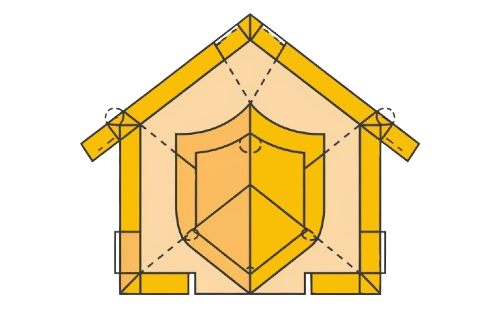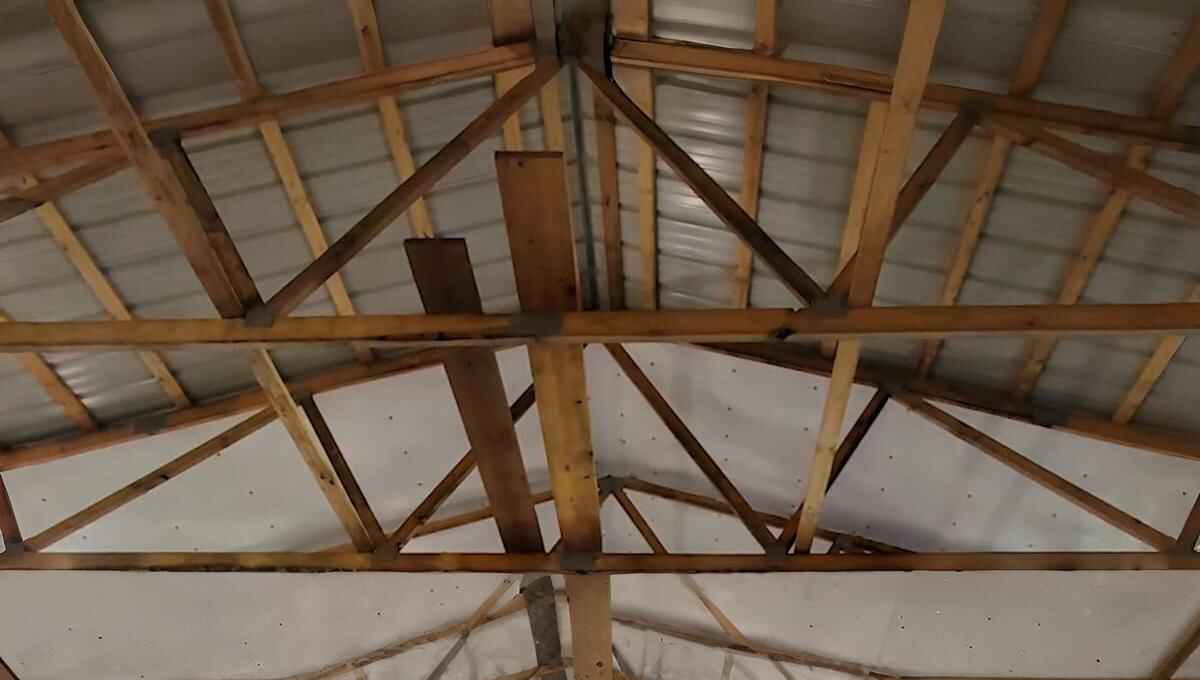Many people don’t realize the importance of proper insulation in a pole barn until cold weather strikes. Without smart insulation techniques, heat loss during the frigid winter months can make your building uncomfortable, while heat gain in summer can drive up energy rates. To effectively insulate, it’s crucial to control the flow of air in and out, ensuring a reasonable climate inside. Whether you spend the majority of your time working hard or playing hard, insulation helps you enjoy a cozy space without breaking the bank.
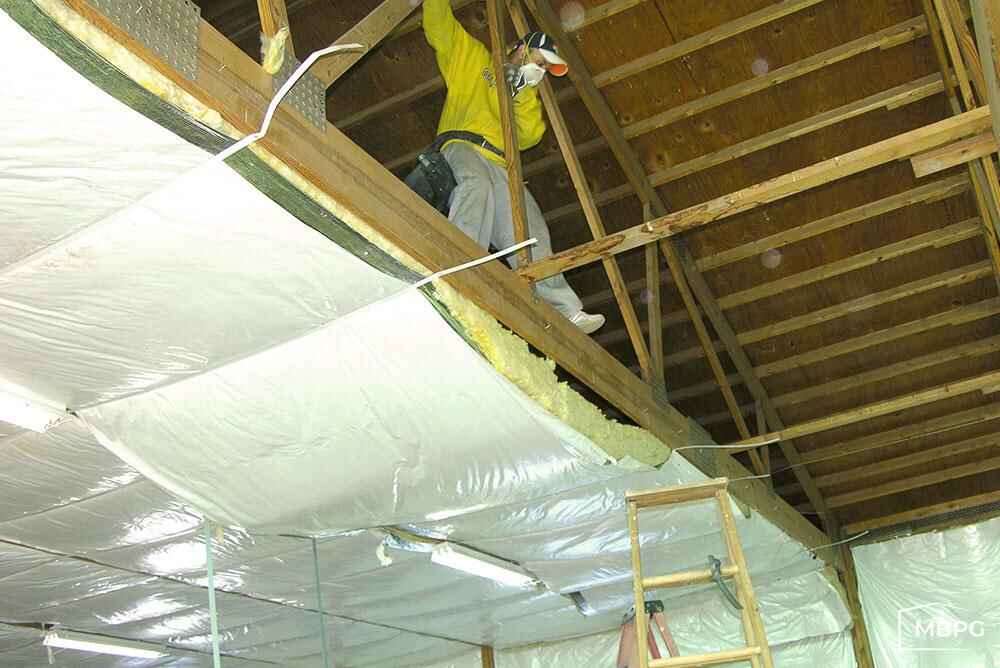
Using the right practices will not only reduce paying for increased heating but also help in preventing moisture, which can damage your post frame building. A well-insulated barn allows you to experience the beauty of white snow without the dread of freezing conditions. Our ultimate guide offers bonus insights on related heating systems and preventative measures that help manage energy efficiency. If you’re unsure where to start, consider these expert tips to maximize the advantages of insulation and create a well-protected space.
Why Insulation is Essential for Your Pole Barn
To truly understand how critical insulation is for a pole barn, consider how it helps maintain a consistent temperature inside your building. Insulation means your barn stays warm in winter and cool in summer, making it more functional year-round. Without proper insulation, temperature fluctuations can make it uncomfortable for storage, livestock, or workspace use. Adding the right insulation not only enhances comfort but also improves efficiency and durability.
Lower Energy Costs and Smarter Investments
A well-insulated pole barn can generate lower energy costs by improving heating and cooling efficiency. Insulation works by preventing unwanted heat transfer, reducing the burden on climate control systems. Since energy expenses are a significant financial investment, focusing on boosting the R-value of insulation—its ability to resist heat traveling—can lead to long-term savings. The higher the composite R-value of the walls and ceiling, the better your insulation will perform. For a post frame structure owner, managing energy use is essential, as it is often the largest controllable operating expense. With rising energy bills and escalating prices, taking steps to minimize consumption and optimize insulation can help realize tangible savings.
Protecting Your Pole Barn from Moisture and Deterioration
Beyond energy savings, insulation also helps prevent damage and deterioration by reducing uncontrolled air flow. Poor insulation can lead to excess moisture, which causes condensation and may lead to rust, mold, and mildew. These issues can weaken the building and affect everything stored inside, including vehicles and equipment. Proper insulation ensures a stable indoor climate, protecting valuable assets and reducing the risk of costly repairs.
Creating a Healthier and More Comfortable Space
Insulation also promotes a healthier environment by controlling heat, cold, and noise inside your barn. Effective insulation practices help create a comfortable space that benefits both people and animals. Whether you use your barn for service, heavy machinery, or to sell products and services, proper insulation enhances usability. For those who spend quality time in their barn—whether with family, friends, or even horses—a well-insulated post frame building can meet expectations, improve comfort, and provide monetary savings as a bonus over time.
The Role of the Building Envelope in Heat Transfer
The building envelope acts as a shell, made up of materials that separate the outside from the inside of a post frame structure. Key components include the roof, attic, walls, foundation, doors, and windows, all of which play a major role in energy efficiency. The building envelope determines how much heating, cooling, and lighting resources a structure will utilize by controlling the energy flow between the interior and exterior. Thermal energy naturally moves from warmer to cooler areas until temperatures equalize, and this heat transfer happens in three ways: conduction, convection, and radiation. A well-designed envelope helps reduce all types of heat transfer, keeping the structure comfortable and energy-efficient.
Conduction
Conduction describes how heat flows within solid materials. In a pole barn, this means heat moves through the building envelope, including the walls, roof, and floor. To reduce conduction heat loss, it is essential to use materials with high R-values that offer better insulation. A well-insulated structure helps maintain a stable temperature by slowing down the transfer of heat through its solid surfaces.
Convection
Convection is the process of transferring heat through gas or liquid particles. In a pole barn, this happens when warm air escapes and cold air enters, creating heat loss. To reduce convection, it’s important to limit air infiltration and exfiltration through the building envelope. Proper ventilation and insulation work together to control airflow, keeping the interior temperature balanced while preventing unwanted drafts.
Radiation
Radiation is heat transfer through electromagnetic waves from a warmer surface to a cooler one. A prime example of this is the sun’s heat warming the earth. To manage radiation heat transfer in a pole barn, it is essential to select, design, and install the right building envelope materials. The objective is to minimize heat gain in the summer and heat loss in the winter. The choices made during the design phase will impact the energy efficiency of the structure for years to come. This is why working with an experienced post frame builder who can provide informed recommendations is crucial.
Insulating Your Pole Barn Based on Its Purpose
Before insulating your pole barn, it’s important to be clear on how you plan to use the space. If it’s a garage where you’ll be working for a couple of hours at a time in mild weather, your insulation needs will be different than if it’s a man cave or she shed where you spend the entire day. If you’re insulating an attic or using the barn to store equipment and materials, insulation should be tailored to match those needs. Since insulation isn’t a one-size-fits-all construction step, answering key questions is crucial to ensuring the best choice for what’s inside your barn.

For animal confinement, like housing horses, you may not need much wall insulation since animals naturally generate heat. Instead, placing insulation under the roof can help reduce condensation in the summer when radiant heat from the sun is shining. A DripStop membrane is another condensation control option that can minimize moisture. Alternatively, you may want to install a control measure to reduce radiant heat when the sun is shining, helping to maintain a stable indoor environment.
Plan Insulation Early for Best Results
The key to insulating a pole barn effectively is to start with the right building design. The best time to address insulation is before construction begins, ensuring that every part of the barn is built to support energy efficiency. A properly designed wall system and overall structure can improve the ability to withstand cold and heat by 17% or more. However, a poorly planned barn will leave you fighting a losing battle, no matter the type of insulation you use.
Considering insulation capabilities during the design phase helps enhance performance and overall efficiency. Following the right considerations can help ensure that your barn maintains the best possible insulation performance, keeping energy costs low and comfort high throughout the year.
Use Air and Moisture Barriers
A well-engineered wall includes an air and moisture barrier to protect insulation and prevent issues like mold or water damage. One effective option is the Kimberly-Clark BLOCK-IT® House Wrap, which is placed on the outside of the insulation. Inside the barn, a vapor barrier made of 6 mil or greater polyethylene helps control moisture levels. This outer barrier creates a surface for foam insulation to adhere to, making it more effective. If an exterior steel panel is ever damaged and needs to be replaced, having a barrier in place prevents the need to cut and replace foam insulation, saving time and effort.
In addition, it is essential to follow sealing guidelines set by window and door manufacturers to prevent air and water from infiltrating through these openings. Properly sealing these areas protects the barn’s interior, ensuring insulation stays effective for years to come.
Plan for Proper Ventilation
To keep your pole barn well-insulated and moisture-free, you must plan for effective ventilation with vented ridges and eaves. Insulation alone won’t prevent heat buildup or excess moisture; addressing ventilation helps control heat, cold, and humidity levels inside the structure. Through thermal convection, warm, moist air rises, and a ridge vent allows it to escape. When wind hits the roof, it creates low pressure, which draws out warm air through the ridge vent, preventing moisture buildup.
To maintain balance, vented eaves allow negative air pressure to draw in cooler, lower humidity air from outdoors. Other openings like doors and windows can also help facilitate this process. The type of insulation you choose, how it is applied, and how you use the barn will determine whether you need more or less ventilation. Be sure to bring this up with your builder so your barn remains comfortable and well-protected year-round.
Choosing the Right Insulation Thickness
When planning insulation for your pole barn, it is important to select insulation thickness strategically based on how the building will be used. The R-value of insulation determines its insulative properties, and a higher R-value means better insulation capacity. A one-inch or two-inch insulation layer can be placed on the exterior, underneath steel, and typically ranges from R-5 to R-16, depending on the type of material. For example, R-5 faced fiberglass insulation has a relatively low insulative value and is commonly used under roofs to avoid condensation on cold days and reduce heat on sunny ones. On the other hand, a two-inch rigid foam insulation rated at R-16 offers three times the insulation value under steel and provides modest heat gain and condensation control.
For better insulation, a six-inch fiberglass batt is often used, with an R-value of R-19. This thicker insulation is not typically applied directly under steel but is instead used with interior framed walls, also called flush walls in a pole barn. While this adds to the cost of the building, it also provides more interior finishing options, such as steel, drywall, and sheeted wood products like OSB or plywood. In addition to temperature control, thicker insulation also offers noise protection from the outside and absorbs sound inside the building, making the space quieter and more comfortable.
Choosing the Right Insulation for Your Pole Barn
There are different insulating materials available for a post frame building, and selecting the best one depends on your heating options and how you plan to use the space. If your structure will be heated regularly, you need insulation that will keep it warm permanently, whereas a space used only temporarily may require a simpler solution. Before choosing, ask yourself the following questions: Will the barn have trusses or a finished ceiling? How often will it be used in extreme temperatures? Your answers to these questions will guide your decision-making process, ensuring you get the best insulation for your needs.
Perimeter Slab Insulation for Temperature Stability
A perimeter slab insulation system is crucial to prevent heat loss from the ground. If you walk outside to a garage, you will likely notice a concrete slab floor. This foundation has its own R-value, but without insulation, heat will escape, reducing efficiency. To protect the rating and prevent heat from escaping, a solid two-inch rigid board can be installed vertically along columns or horizontally under the floor. If your pole barn has in-floor heating or sits on a high-water table, you should insulate under the entire structure to avoid water stealing heat as it flows away. A properly built foundation with insulation saves energy in the long run.
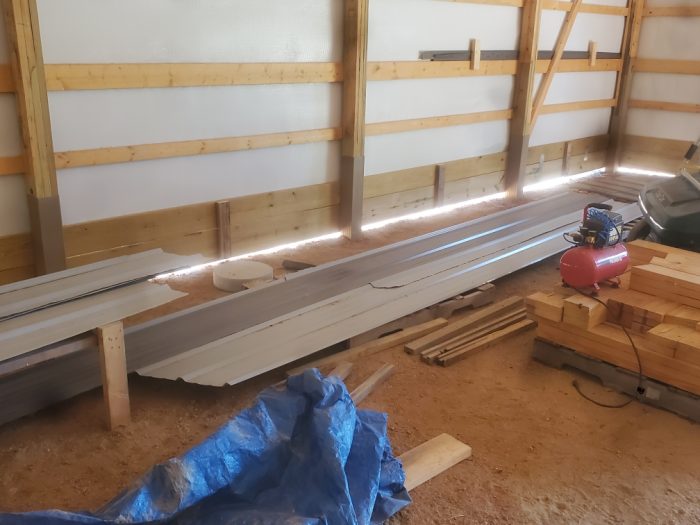
Many barn owners don’t consider insulation early on, but it is especially true that opting to install later can be costly. It may require digging, increasing time and extra expense. If your toy shed is meant for ATVs, boats, or gatherings, insulation ensures it remains a comfortable environment for years. Consulting a builder or concrete contractor is important, as some local building codes may require frost protection for foundation insulation, no matter how you plan to use the space.
Wall Insulation for Energy Efficiency
A well-insulated barn starts with well-engineered walls. A wall cavity with less obstruction allows insulation to work better, preventing heat and cold travel that you don’t want. A well-designed pole barn typically has columns placed 8 to 10 feet apart, unlike conventional stud wall systems where columns are 16 inches apart. This means more insulation and a lower chance of heat loss.
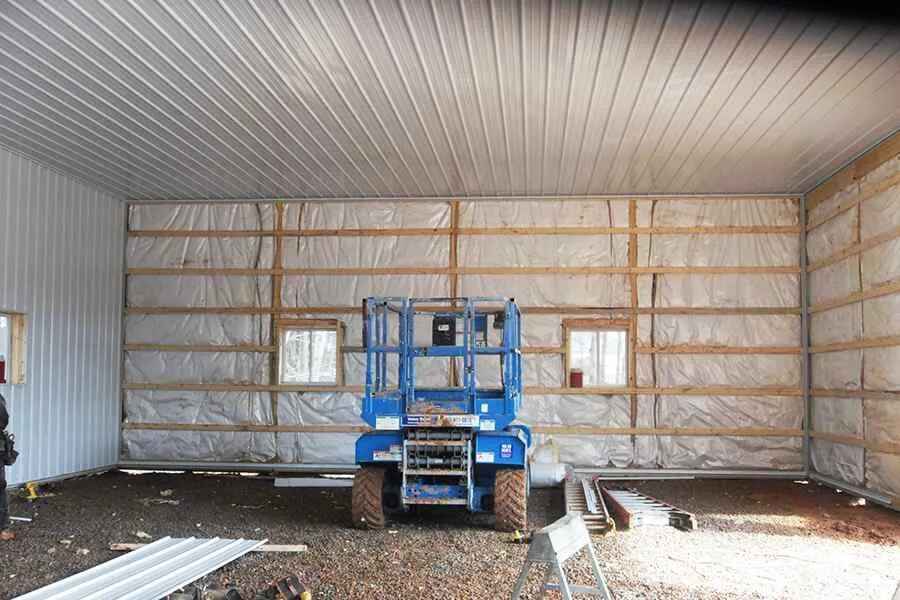
Insulating exterior walls provides a barrier against harsh winter weather and reduces conduction inside the barn. Without insulation, a heating-cooling system will be employed inefficiently, leading to waste of hard-earned money. Even if you run a furnace at full steam, heat will exit the space unless proper insulation is added, significantly reducing energy loss. Ensuring your insulation meets or exceeds energy code requirements will also help lower energy costs in the long term.
Exploring Different Insulation Types
There are five types of wall insulation commonly used in post frame buildings, each suited for different needs. The best choice depends on climate, usage, and budget. Investing in the right insulation ensures your barn remains comfortable and cost-effective year-round.
Fiberglass Batts
Fiberglass batts are one of the most common insulation choices for a pole barn due to their relatively low cost and ease of installation. These long spans of insulation are placed in-between posts, which helps reduce air leaks and improves efficiency. If you choose fiberglass, consider purchasing a vapor barrier, an impermeable material installed between the interior wall and insulation. This minimizes condensation caused by moisture buildup and prevents the insulation from getting wet, which could lessen performance and contribute to deterioration. The installed price ranges from $0.95 to $1.30 per square foot, making it a budget-friendly option for many barn owners.
Spray Foam Insulation
One of the most effective insulation options today is sprayed polyurethane foam (SPF). In recent years, it has become a popular but more expensive alternative to fiberglass batts. This insulation fills and seals all exposed areas and cracks within the structure, providing greater protection from air drafts and moisture. However, because of the chemicals and equipment involved, a professional spray-foam contractor should be hired for the job. If a wall needs to be replaced, this material can be difficult to remove due to its glue-like characteristics. That’s why we recommend having a building wrap installed on the steel before adding spray foam. Additionally, some products haven’t been tested for steel use, and certain cellulose insulation ingredients, such as fire retardant chemicals, can cause steel corrosion. Consequently, some metal suppliers won’t provide warranty coverage if SPF is used, so it’s important to check with your pole barn builder before making a final decision. The installed price ranges from $3.50 to $5.50 per square foot.
Vinyl Back
For a different approach, vinyl back insulation combines a fiberglass batt with a white coating on the backside. It is fitted in-between framing, but it can sometimes cause issues with sagging. Since vinyl back is thinner than traditional fiberglass batts, it has a lower R-value, which affects insulation efficiency. The thickness varies, making it a challenge to situate properly. However, it can still be a useful option in certain applications. The installed price ranges from $1.90 to $4.00 per square foot, offering flexibility based on budget and insulation needs.
Rigid Board Insulation
Another option is rigid board insulation, which is placed directly underneath exterior steel siding. These rigid panels provide a very high R-value with continuous coverage, resulting in less air infiltration. Most importantly, not all products are created equal, so it’s necessary to make sure they are approved for use in exposed applications. The installed price ranges from $2.10 to $3.30 per square foot, making it a reliable choice for barns needing a balance of durability and cost efficiency.
Role of Building Wrap in Insulation
Building wrap is not a type of insulation, but it serves as an optional convection barrier that is positioned underneath the structure’s steel siding. It acts as an additional blockade against moisture and air infiltration, working together with pole barn insulation to create a more comfortable interior. Before purchasing, it’s important to research building codes, steel strength, and insulation options, as these considerations help determine whether it’s a wise investment. You can contact city hall or the county courthouse to check local requirements. The installed price ranges from $0.25 to $0.35 per square foot, making it a cost-effective way to enhance insulation efficiency.
Choosing the Best Wall Insulation
For a post frame building, the best insulating materials are fiberglass batts and spray foam, each offering unique benefits. Fiberglass batts are a cost-effective solution that works uniquely with pole barn columns, making them a practical choice for many barn owners. On the other hand, spray foam insulation provides superior R-value and airtightness, ensuring maximum energy efficiency. However, it comes with a higher cost and requires a more laborious installation, which can be a couple of drawbacks to consider.
Attic Insulation
Proper attic insulation is essential for maintaining a stable temperature in a pole barn. It requires a steel or drywall ceiling installed first before adding insulation. The most common options are fiberglass batts and blown insulation. When installed correctly, loose-fill insulation creates an airtight finish by filling gaps between ceiling joists and the bottom chords of trusses. A contractor with specialized equipment usually applies this insulation since it is easy to insert without cutting or fitting. It can adapt to any R-value and can conform to odd-shaped spaces. According to Energy Star®, the recommended level is R-38, which means applying 10 to 14 inches of insulation in attics. The installed price ranges from $0.95 to $1.25 per square foot, making it a cost-effective way to improve energy efficiency.
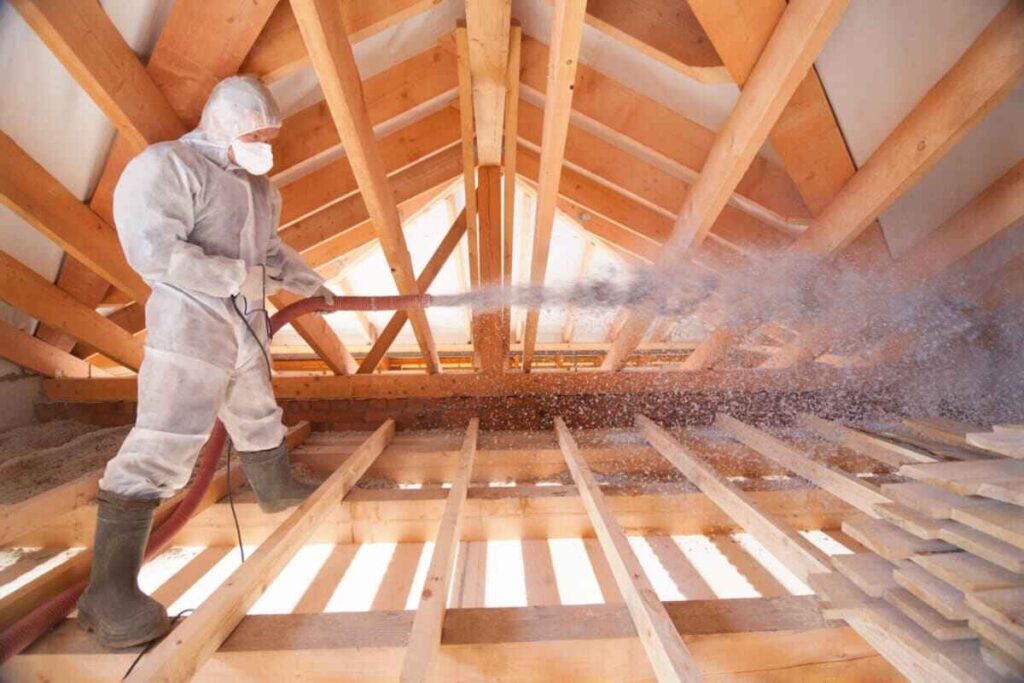
Best Attic Insulation Choice
We recommend blown insulation for the attic, as it provides better coverage and efficiency. However, keep in mind that loose-fill material requires a ceiling. If you don’t plan on building a ceiling, then you will need roof insulation instead to maintain proper temperature control.
Roof Insulation
An insulated roof is an inexpensive substitute for an interior liner or attic insulation. It is typically placed under the roof sheathing, exposing truss members while still providing effective temperature control. This insulating material works well with radiant heat, as opposed to forced air systems, where heat rises into the truss space and gets wasted. Rigid board insulation is a typical roof application, as it prevents the need for additional finishing touches like drywall. A foil layer reflects radiation, which keeps the building cooler in summer. Additionally, its white surface brightens the interior and lowers lighting resources needed during the day.
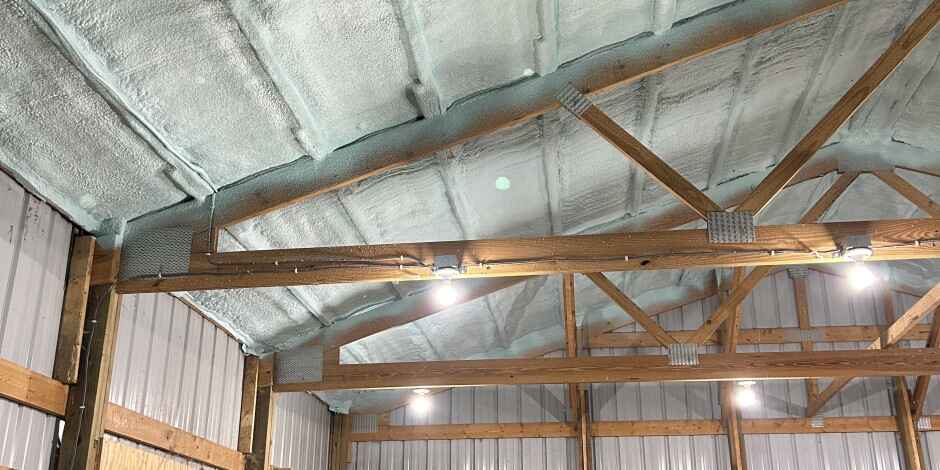
A radiant barrier, which combines batts and spray foam insulation, helps reduce energy use by absorbing and slowing heat transfer, while also plugging air leaks caused by convection. It can be placed in a post frame building and works better in attics or under roofs of air-conditioned structures. For it to function properly, at least one side must face an air space to allow efficient heat reflection.
Best Roof Insulation Choice
For roofing insulation, we recommend spray foam insulation, despite its higher cost. It provides superior energy efficiency, seals gaps effectively, and ensures better temperature control inside the barn.
Preventing Moisture and Condensation
When insulation planning, it’s important to consider moisture and condensation as they can impact the durability of your pole barn. A number of factors influence how moisture builds up, and making the right decisions early on can help protect the structure. If left unchecked, condensation can cause rust, mold, and deterioration, weakening the barn’s interior and damaging valuable equipment or stored materials.
Alternative Condensation Control Methods
To control condensation, you must consider alternative options that work best for your building’s needs. When temperature and humidity conditions reach the dew point, moisture condenses on the underside of a non-insulated metal roof. If too much condensation builds up, drops of water will eventually fall, potentially damaging the contents below. The traditional method to combat this is to insulate the roof, ensuring the inside roof panel never reaches the dew point. However, if you don’t plan on insulating the entire building, you can install a more economical solution, such as a condensation control system. This prevents excess moisture buildup while keeping the barn interior dry and protected.
Also Read: How to Insulate a Metal Roof?
Managing Moisture Without a Barrier
A pole barn that is heated and cooled needs proper insulation to prevent moisture buildup, even if it is not wrapped in an air barrier. A typical insulated wall should include drainage material on the outside of the insulation and under the exterior cladding. Ideally, a vapor barrier, usually 4 to 6 mil polyethylene, should also be placed underneath the interior liner like drywall, chipboard, paneling, or a steel liner. If the exterior steel is tight with no water penetration, it may be possible to insulate using fiberglass batt or rigid foam without an additional air/moisture barrier. However, rigid foam refers to pre-formed foam sheets, not expanding foam sprayed directly onto steel.
If you are using expanding spray foam on the interior side of steel, having a barrier layer is recommended. For example, if a vehicle damages an exterior steel sheet, a separating layer allows easy replacement by unscrewing and installing a new panel. However, without a barrier, you would need to cut through the steel to detach the foam from the rest of the foam-filled wall cavity, requiring re-insulation and a full steel panel replacement. This extra work can be costly, so proper planning can help avoid unnecessary repairs.
Importance of Door & Window Placement
The doors and windows in a pole barn do more than just create views—they also admit solar energy and supply natural ventilation. Their form, size, and location depend on the building envelope and directly affect heat loss. Since air can escape around these openings, it is crucial to select the right quality and quantity of energy-efficient components. Making smart choices can lower heating, cooling, and lighting costs while improving overall insulation performance. To get the best results, always hire a contractor who prioritizes precise installation.
Choosing the Right Doors
A door-related heat loss issue often arises due to poor sizing and weatherstripping, as well as the constant opening and closing of the building access points. The best approach is to select doors with built-in thermal breaks, which separate interior and exterior surfaces. This core material helps reduce heat loss in winter and minimize heat gain in summer. Without an excellent thermal break and a tight weather seal, the promoted R-value of a door becomes worthless. For large entry doors, it is best to choose a door type that allows easy access while ensuring an airtight perimeter seal to maintain a stable indoor temperature.
What Should You Look for in Windows?
Selecting windows for a pole barn requires careful planning, as they impact insulation, heat loss, and overall energy efficiency. The National Fenestration Rating Council (NFRC rating) helps assess the performance of windows based on several factors. The U-Factor determines how well a product prevents heat from escaping—a lower U-Factor means better insulating power. The Solar Heat Gain Coefficient (SHGC) measures how much solar heat enters the structure—a lower SHGC score ensures less solar heat transmission, keeping the barn cooler in summer. The Visible Transmittance (VT) rating shows how well a window allows daylight inside—a higher VT number results in more natural light and energy savings. Additionally, Air Leakage (AL) ratings indicate airtightness, while Condensation Resistance (CR) ranks a window’s ability to withstand interior moisture buildup—a higher CR grade means better resistance to condensation.
Reducing Window Condensation & Enhancing Insulation
To reduce heat transfer and moisture buildup, high-quality framing materials like wood, vinyl, or aluminum are excellent choices, as they help block precipitation and retain heat. Pole barn windows with multiple panes insulate much better than a single sheet of glass, especially when filled with energy-efficient inert gas such as argon or krypton. These clear, non-toxic, odorless gases significantly minimize conductive heat transmission, making the space more comfortable in all seasons. Additionally, to ensure a secure seal, consider box trim windows that come with rubber gaskets, allowing them to be tightly caulked to the steel siding. Unlike J-channel installations, which may leave a small gap between the channel and the metal, properly sealed box trim windows help in reducing window condensation and improving overall insulation performance.
Other Heating Systems to Consider
When heating a pole barn, it’s essential to evaluate the heating systems that work best with the building envelope and insulation components. The right heating method depends on how you use the space, and it’s worth checking if utility companies offer rebates for installing high-efficiency systems. To get potential savings, you should check with your local energy provider for details on available incentives.
Furnaces
Many post frame buildings use furnaces for heating, as they generate warmth by burning fuel such as natural gas or propane. This method is commonly used in homes but also works well for furnished interiors of pole barns. However, furnaces require a forced air distribution system, meaning ductwork must be installed. Some units can be hung from the ceiling, making them a great option for spaces where aesthetics are not critical, such as farm shops or hobby barns. Newer gas furnace models are rated by Annual Fuel Utilization Efficiency (AFUE), with efficiency levels ranging from 78% to 96%, ensuring better energy savings when properly installed.
Efficient Climate Control with Heat Pumps
A heat pump is an electric, all-in-one heating and cooling system that works year-round by transferring heat from one place to another. During winter, it extracts heat from an outside source and transfers energy indoors to keep the pole barn warm. In summer, the heat flow is reversed, pulling warm air out to provide air conditioning. The most common type is an air-source heat pump, which moves heat between the building and outside air. For higher efficiency, some geothermal or water-source heat pumps pull heat from the ground or a nearby water source, making them a great option for stable temperatures.
While heat pumps are incredibly efficient, they have some differences compared to conventional systems. They typically have a higher initial cost, take longer to heat or cool a space, and require a higher volume of air for movement. However, they are rated by the Heating Seasonal Performance Factor (HSPF) and are a great long-term investment for maintaining consistent indoor temperatures with energy efficiency.
Radiant Heating for Efficient Warmth
A radiant heating system is a highly effective way to heat a pole barn, as it supplies heat directly from the ceiling or floor. Unlike forced-air heating, where warm air moves through ducts, radiant heat warms objects and occupants instead of just heating the air. This means no energy is lost through ductwork, making it more efficient. However, if you also need cooling, a separate A/C system must be installed. Radiant heating is especially recommended for post frame buildings with frequently opened doors, as it helps maintain warmth even when outside air enters.
Types of Radiant Heating Systems
There are two types of radiant heating systems:
Surface-mounted radiant ceiling panels provide heat to the entire structure or specific zones. These panels quickly adjust the room’s temperature by heating or cooling as they turn on and off.
On the other hand, a radiant floor heating system is a more expensive option that uses water to transmit heat. Though it takes longer to warm up, it retains warmth for an extended period, making it a good long-term heating solution for pole barns that need consistent indoor temperatures.
Stoves as a Heating Option
Stoves come in a variety of types, ranging from traditional wood-burning units to those that burn corn, oil, or sawdust pellets. They can be installed inside or outside your post frame building, depending on your heating needs and space. A reputable dealer can help you understand different stove features and sizes to determine what works best. Some people use stoves as their primary heat source, while others combine them with a forced-air heating system for additional warmth.
Before purchasing a stove, you should consider several factors. Think about the need to buy and store fuel, the time and effort required to maintain the fire, and the possibility of air pollutants that wouldn’t be an issue with a furnace or heat pump. Additionally, check local building codes to see if wood-burning appliances are allowed. This step is important because there’s always a risk of fire outbreaks, and ensuring compliance can prevent safety hazards in your post frame structure.
Understanding the Cost of an Energy-Efficient Pole Barn
The cost of an energy-efficient pole barn may seem expensive at first, but it all boils down to perspective. Making energy-efficient choices for a post frame structure often means a higher initial investment, but these additional expenses can be offset by lower operating costs over time. To determine whether upgrades provide a good return, it’s important to establish a baseline building and compare it to an upgraded version in terms of cost and performance. While more efficient choices might require a bigger upfront budget, they help reduce long-term expenses and improve overall efficiency.
Final Thoughts
Insulating your pole barn effectively is essential for saving money, protecting equipment, and keeping your family safer. Whether you choose the DIY route or work with a builder, it’s important to identify how you’ll use the space before construction begins. Take the time to educate yourself on available options, as making good decisions early on will ensure your barn is well-designed, properly insulated, and built to perform well for many years to come.
FAQ
What Is the Cheapest Way to Insulate a Pole Barn?
The cheapest way to insulate a pole barn is using fiberglass batts, which are easy to install and come in rolls or batts. Other insulation options include blown insulation for cost-effective attic space coverage, cellulose insulation with a higher R-value per square inch, though it is less dense, and rigid foam insulation, which adds moisture resistance and thermal efficiency. For excellent thermal resistance, air sealing, and moisture control, spray foam insulation is a great choice, but it is more expensive and requires professional installation.
How Much Does It Cost to Insulate a 30×40 Pole Barn?
Insulating a 30×40 pole barn can cost anywhere from $1,200 to $3,300, depending on the type of insulation used, labor costs, and the specific needs of the building. Fiberglass batts are a common, budget-friendly option, costing $0.95 to $1.30 per square foot installed. Spray foam provides excellent insulation and air sealing but is more expensive, ranging from $1.00 to $4.50 per square foot. Rigid foam boards offer another effective solution, with installed prices between $2.10 and $3.30 per square foot.
Do I Need a Vapor Barrier in My Pole Barn Walls?
In Los Angeles, CA, pole barn walls usually do not require a traditional vapor barrier due to the mild climate. However, if you have a metal roof, consider using a breathable membrane to allow moisture to escape and prevent buildup.
How Much Does It Cost to Insulate a 40×60 Shop?
The final cost of insulating a 40×60 steel building depends on materials and construction costs. On average, it can range between $2,400 and $6,600 to insulate a metal building.
